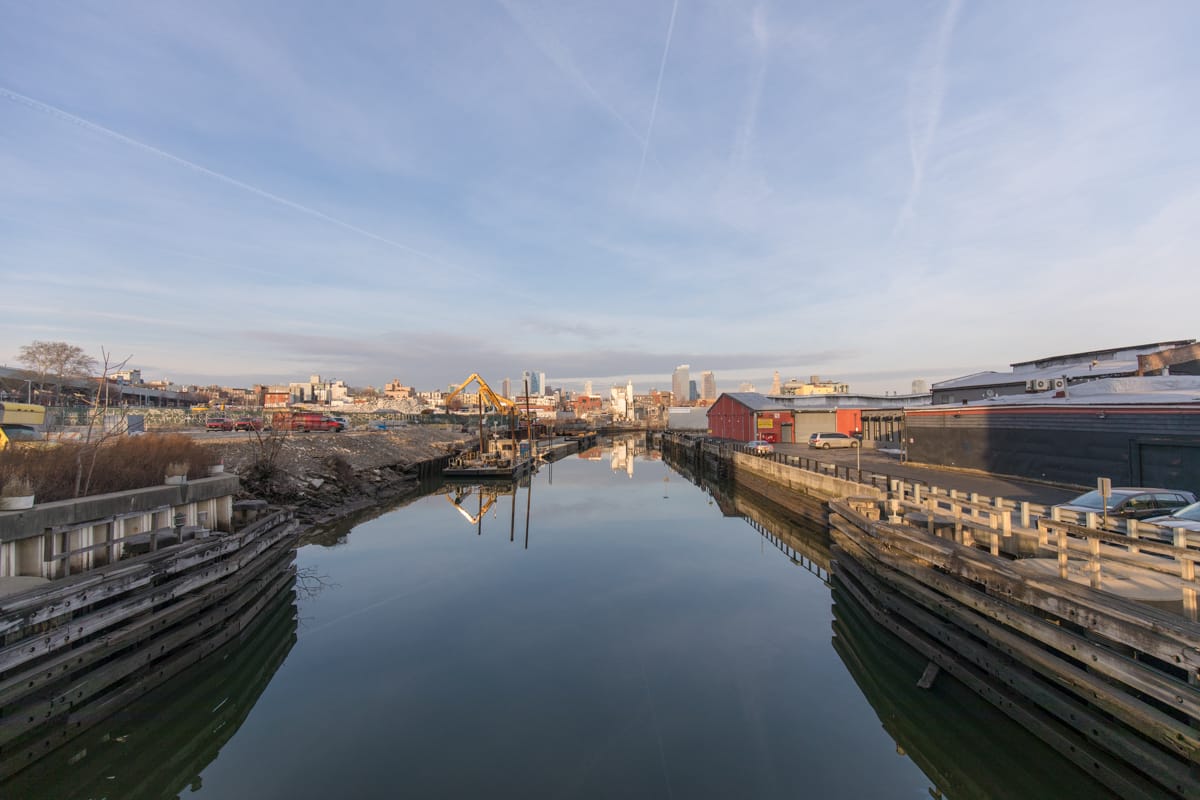Man Swims Gowanus Canal To Advocate For Its Cleanup

GOWANUS – In celebration of Earth Day 2018, clean-water activist Christopher Swain swam the 1.8 mile length of the Gowanus Canal on Sunday to advocate for the cleanup of the polluted waterway.
“People say it’s crazy that I’m swimming in here with the oil, the gas, the sewage, the coal tar residue…it’s crazy that it’s not clean enough to swim in and I’ll keep going until it is,” he said in a video posted to his Swim With Swain Facebook page yesterday.
Starting in 2015, this is the third year that the 50-year-old has taken the plunge into the Superfund site to campaign for its cleanup. He protected himself by wearing a yellow, puncture-resistant search-and-rescue dry suit, ear plugs, a silicone cap, gloves, boots, and swim goggles, News 12 reported.
“What it feels like in here is disgusting,” Swain says in another video. “There’s an awful film on the water. You can see visible sewage and rainbow sheen from the oil. I can smell gas, oil, poop. I bump into trash. I’m doing it because I love this canal and I want it to be clean.”
After swallowing some of the water filled with toxins and raw sewage, Swain gargled with hydrogen peroxide. After completing his swim, he rinsed off with diluted bleach.
A pilot study began in October 2017 at the Fourth Street Turning Basin near Whole Foods in which steel sheets were being installed to reinforce the crumbling bulkheads along the perimeter of the canal so that workers could begin dredging up approximately 11 feet of sediment, or “black mayonnaise,” at the bottom of the water and capping it off with two feet of sand, clay, and other materials.
The project, initially scheduled to be completed this month, ran into problems when the machinery installing the bulkheads started creating “fissures in nearby land and buildings.” Data collected from the pilot study will be used to finalize a cleanup plan for the northern part of the Gowanus Canal, with cleanup of that portion of the canal scheduled to be completed by 2022.
“Even if we pull out all the contaminated muck at the bottom of this canal, it’s still going to be full of coal tar residue, raw sewage, oil, and gasoline, and that’s not clean,” Swain said after completing the swim. “So let’s not call it ‘clean’ until it’s clean.”




